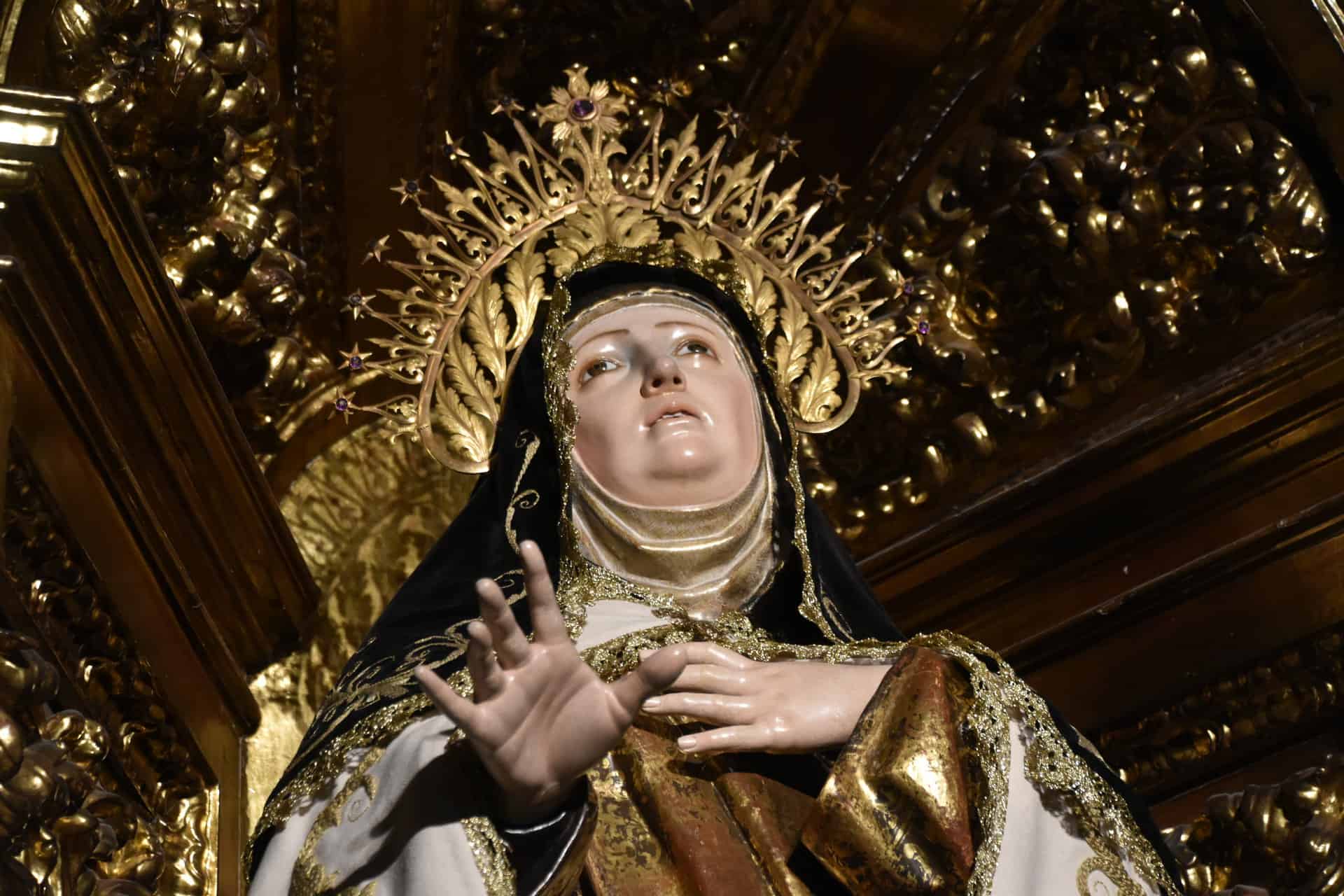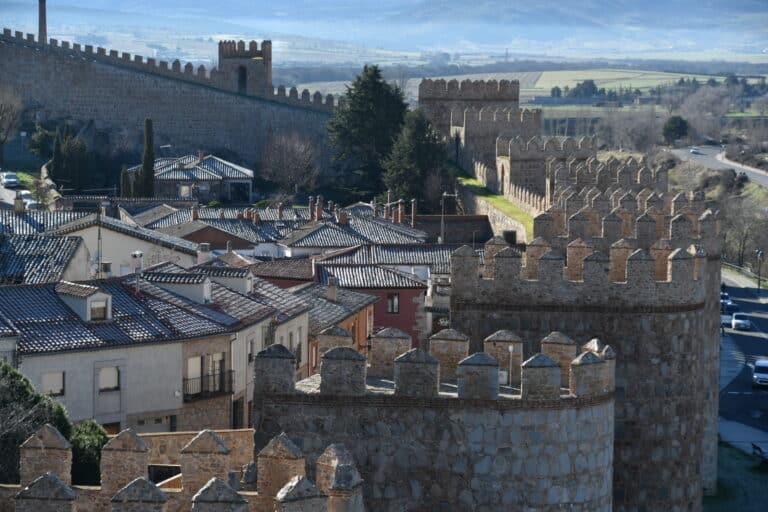

[ Jan.2023 ] On the second day in Ávila, a world heritage town in Castile and León, Spain, we were able to climb the walls, which we really wanted to do.
At the time of check-out, we asked the hotel receptionist about the climbing the wall and found that the entrance was in the direction we hadn’t walked the day before.
You walk along the cathedral wall and there is a vending machine in the building (with a clear sign), buy a ticket for €5 per person, and go up the stairs inside the building to come out to the wall.
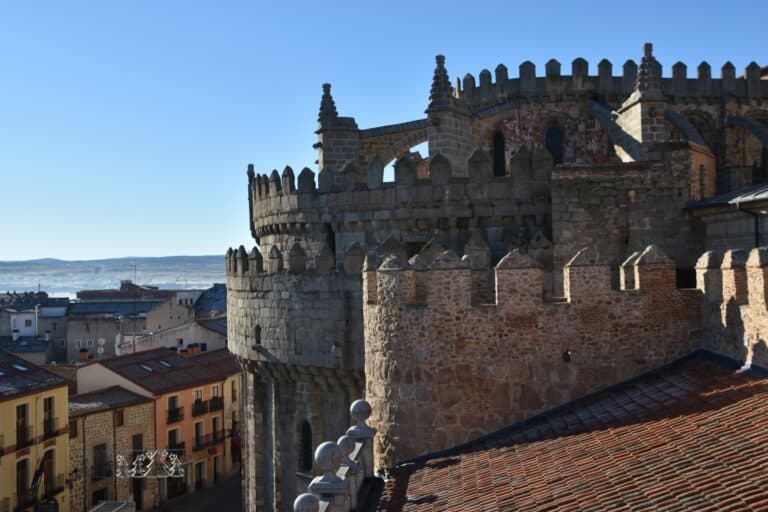
This is certainly a great experience.
The weather was fine on the day, and the view was superb.
However, according to the display of the mobile phone, the temperature was minus 1 degree.
But there was no wind, so when we were under the sun, it wasn’t too cold.
It is said that the walls were built over nine years after the city was recaptured from the Muslims in the 11th century, to stop them from attacking again.

Most of the parts are from the 12th century.
It is said that Christians, Jews, and even Muslims who settled in Ávila joined forces to build the wall.
According to the guidebook, the wall is 2.5 kilometres long.
It has 88 watchtowers and 8 gates, with an average height of 12 meters and an average thickness of 3 meters.
It is written that no other medieval wall is so well preserved.
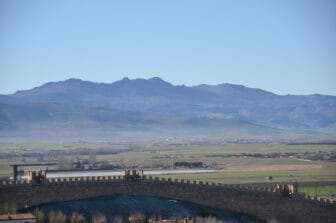
It really is the perfect wall which could be surrounding a fairy tale kingdom.
The scenery of the distant mountains seen from the top of the wall and view of the wall itself are wonderful.
The frost on the roofs of the old houses within the walls and the shaded lawns just outside the walls were also picturesque.
The houses just outside the walls were newer, though, and not very impressive.
Anyway, we took a lot of good pictures.
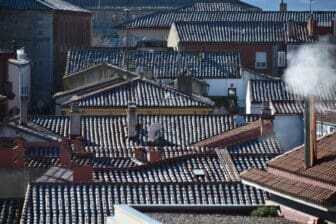
Come to think of it, wall walks have all been successful : Lincoln in England, Rhodes in Greece and Dubrovnik in Croatia.
If you come across any walls, climb it.


